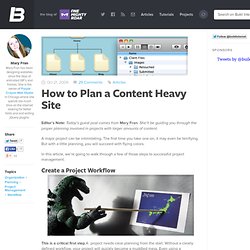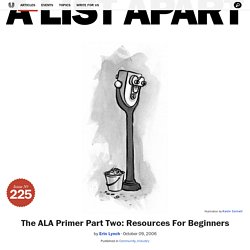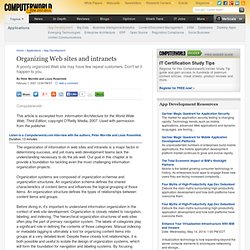

UX Design Defined. By Ritch Macefield Published: June 18, 2012 “In the field of user experience, people often confuse terms like information architecture, interaction design, visual design, usability engineering, and UX design.”

Unfortunately, in the field of user experience, people often confuse terms like information architecture, interaction design, visual design, usability engineering, and UX design. In some cases, people use these terms almost interchangeably. This article provides a lexicon of these terms and more clearly defines the role of the user experience designer. Information Architecture Information architecture (IA) focuses on the organization of data—that is, how data is structured from a user’s perspective, as opposed to the system, or technical, perspective.
At the level of an entire Web site, or application, information architecture determines what data is on each page and how pages relate to each other. “Information architecture (IA) focuses on the organization of data….” Interaction Design. How to Plan a Content Heavy Site. Editor’s Note: Today’s guest post comes from Mary Fran.

She’ll be guiding you through the proper planning involved in projects with larger amounts of content. A major project can be intimidating. The first time you take one on, it may even be terrifying. But with a little planning, you will succeed with flying colors. In this article, we’re going to walk through a few of those steps to successful project management. Create a Project Workflow This is a critical first step.A project needs clear planning from the start. Who will be responsible for the site content? These are a crucial considerations in the beginning of any project, and if you skip them now it will be very difficult to work with large amounts of data later.
Organize Files Logically Once you have decided on a workflow, it’s time to get your assets in order. The ALA Primer Part Two: Resources For Beginners - A list apart (web design resource) A note from the editors: While helpful when first published, many of these links are now out of date.

A List Apart publishes articles written for working web professionals, but we appreciate the predicament of new web designers and builders who aren’t sure where to begin. As we promised in our primer for readers new to ALA, we’ve collected a set of starting points for the next generation of people who make websites. Article Continues Below But before we jump into the lists, a personal note. Early in my career, I found myself at a crossroads: I had to decide whether I should finish my design degree or to go the route of self-education. I’d been e-mailing Carole Guevin, the founder of Netdiver, with questions about the design industry and about her site — and she was always warm, receptive, and patient with my myriad of inquiries. ALA peanut butter sandwiches#section1 The following websites comes from ALA staff recommendations. Jesse James Garrett: information architecture resources. Information Architecture Consulting by Peter Morville.
Information Architecture Policies and Standards (eGovernment Resource Centre) Organizing Web sites and intranets. By Peter Morville and Louis Rosenfeld February 7, 2007 12:00 PM ET Computerworld - This article is excerpted from Information Architecture for the World Wide Web, Third Edition, copyright O'Reilly Media, 2007.

Used with permission from the publisher. Listen to a Computerworld.com interview with the authors, Peter Morville and Louis Rosenfeld. The organization of information in web sites and intranets is a major factor in determining success, and yet many web development teams lack the understanding necessary to do the job well. Organization systems are composed of organization schemes and organization structures. Before diving in, it’s important to understand information organization in the context of web site development. Organization Schemes We navigate through organization schemes every day. In fact, the organization schemes of the phone book and the supermarket are fundamentally different. Exact Organization Schemes Let’s start with the easy ones.
Management and Publishing Policies. A List Apart: Articles: What’s the Problem? One of the biggest problems in delivering a website, and yet probably the least talked and written about, is how to decide, specify, and communicate just what, exactly, is it that we’re going to build, and why.

What problem are we solving? Who needs it? What’s this site for, anyway? Poor understanding of target user needs or our client’s vision, ineffective use of limited resources, misguided emphasis on the wrong design priorities, over-emphasis on pet technologies — all will contribute to a failed, late, inappropriate or too-expensive website. Experience can teach us how to avoid pitfalls, but the greatest lesson can be learned by the least experienced: the earlier that purpose and goals are clearly defined and recorded, the more easily problems are identified and solved, the easier it is to stay focused, and the better the result is for everyone. Introducing use cases#section1 An especially useful technique to consider is use cases.
Chapter 2: Information Architecture for the World Wide Web: Designing Large scale Websites.